
The latest hearings of Britain’s long-ongoing Undercover Policing Inquiry have shined further light on the ruthless, long-running conspiracy between British business and security services to identify, monitor and neutralize “subversives” in workplaces.
For example, manual laborers who raised health and safety concerns on building sites, or engaged in political activism, or were trade unionists. These workers would then be “blacklisted” from employment in any field, for life.
The eruption of Britain’s blacklisting scandal predates the UCPI’s creation. It began in earnest one cold morning in February 2009, when investigators from the Information Commissioner’s Office (ICO), London’s data watchdog, visited a decrepit premises secreted down an alley in Droitwich, Worcestershire. After knocking loudly on the door, it was opened by an individual named Ian Kerr. The ICO team informed him that they had a search warrant and were coming in.
The building was The Consulting Association’s headquarters. One would not have guessed from its run-down façade or determinedly anodyne name, but it was the core nucleus of the blacklisting intrigue. Kerr was provided information on bothersome workers by a number of sources, including employers and state spies; he would then build up dossiers on targets and blacklist offenders. When individuals applied to work on a building project, the firm(s) in charge discretely forwarded their names to Kerr, to determine whether they were blacklisted. Over the course of his Association’s 16-year existence, 40 of the British construction sector’s biggest firms made use of its services.

Once inside the tatty office, where staff still relied on fax machines and typewriters, the team quickly found what they were looking for. Card indexes resembling police intelligence filing systems, and corresponding alphabetized ring-binders of documents on blacklisted workers. The files contained their National Insurance numbers, home addresses, vehicle registrations, and clippings from pamphlets, underground left-wing publications and newspaper articles mentioning them. In some cases, there was even information about an individual’s spouse.
Cautionary comments were also included. “Strike instigator.” “Trouble-stirrer.” “Communist party member.” “Wears anti-Nazi League badges.” “Good worker, but very militant.” “Irish ex-army, bad egg.” “Talks like a young Alf Garnett. Do not touch!” These were just a few of the more salacious observations.
ICO chief investigator David Clancy said the discovery was “like Christmas.” Kerr’s take was rather different. He despaired: “You realize you’re about to destroy a very effective network in the industry?” The previous year, he conducted approximately 40,000 checks on job applicants at the behest of British construction giants.
The ICO raid put a permanent end to The Consulting Association, produced several official investigations into its activities and the wider issue of workplace blacklisting in Britain, and resulted in millions being paid out to affected workers. However, many grave questions about the affair linger today. And the practice of blacklisting, and collusion between British security and intelligence services and major corporations, endures to this day.

“House Arrest”
For years, rumors widely circulated among British workers that the construction industry operated a blacklisting structure. Countless skilled laborers with extensive resumes, strong references, impressive attendance and punctuality records on-site found themselves inexplicably unable to find work literally anywhere. The impact of this unspoken employment embargo upon their psychological well-being, personal lives and finances was devastating.
Many were forced to spend their remaining years unemployed, subsisting off modest state benefits and/or whatever savings they had. Others emigrated, or retrained at great personal and financial cost. Typically though, they were unable to secure work in their newly found fields too. Some were driven to suicide. Blacklisted bricklayer Brian Higgins has lamented:
“It’s a form of house arrest…you have nothing, you don’t have the means to actually get out and socialize and enjoy yourself and lead a life most people take for granted.”
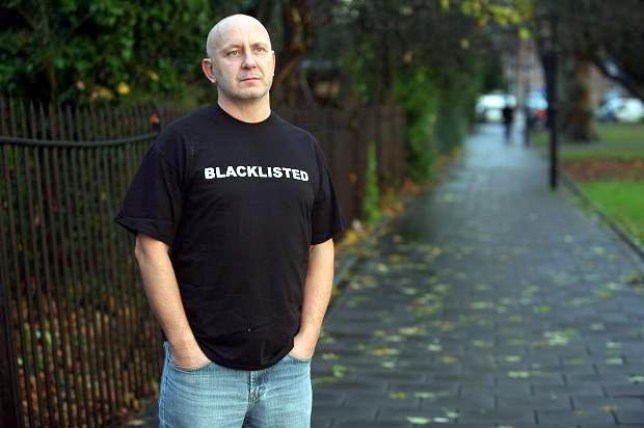
A number of people who suspected they had fallen victim to this subterfuge attempted to ascertain the truth by taking their former employers, or companies that unaccountably rejected them, to employment tribunals. However, none was able to prove the structure existed. That was until 2007, when three electricians won a case for unfair dismissal following their unaccountable sacking from a construction project, mere weeks after hiring. In a landmark judgment, the tribunal concluded a “disgraceful” blacklisting system was in place in Britain’s construction industry.
Key to the trio’s success was the testimony of whistleblower Alan Wainwright. In 1997, while national labor manager at Crown House—a subsidiary of since-collapsed Carillion—he was told by senior management that many major sector players paid Kerr for intelligence on potentially problematic applicants. The company was due to make use of his services, so dispatched Wainwright to meet with Kerr and discuss how the relationship would work in practice.
Once briefed, Carillion’s head office took responsibility for managing the process. Wainwright was instructed by both his employers and Kerr not to discuss the system, or their arrangement, with anyone. Fast forward to 2004, Wainwright was manager at Haden Young, a subsidiary of Balfour Beatty. There, he found the blacklisting system similarly in operation. He eventually launched a grievance complaint against the company, despite worrying he would be blacklisted too.
Wainwright quit in 2006. His search for a new job was fruitless, with more than 150 applications rejected. His fears confirmed, he started publishing information about Kerr and The Consulting Association. In the process, he named on his blog hundreds of workers who may have been blacklisted. This whistleblowing was ignored by the industry and media alike, but eventually caught the attention of affected workers. Wainwright began assisting them in their legal actions, leading to the electricians’ watershed 2007 victory.
In June the next year, investigative journalist Phil Chamberlain wrote an article about the case for The Guardian. Noticed by an ICO employee, it was passed to David Clancy’s desk. Recognizing the grave data-protection implications, the Office’s Chief Investigator immediately contacted individuals named in the piece to get their side of the story in full. Wainwright’s bombshell insight was sufficient for the ICO to secure a search warrant for Haden Young’s offices. They were raided in September 2008.
This yielded a trove of compromising information on blacklisting, and The Consulting Association’s name and fax number. While the obvious next step was to raid the Association, locating it was problematic. The organization was not registered as a company, charity or other legal entity in Britain. It took the ICO threatening British Telecom with a court order to learn the Association’s address and Kerr’s name. After securing yet another search warrant, the blacklist bust was finally on, eight months after the ICO investigation began.
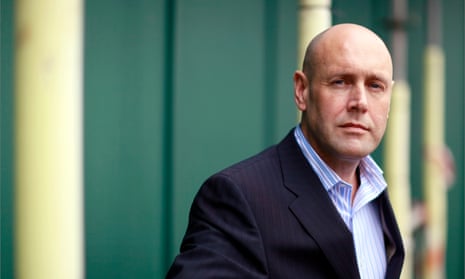
“Intelligence Record”
The operation was hailed as a major coup by the ICO. Yet, if it was a victory, it was pyrrhic in the extreme. For one, as blacklisting was not illegal, Kerr was only charged with low-level breaches of the Data Protection Act. In May 2009, he pleaded guilty, receiving a mere £5,000 fine. Companies that utilized the Association’s services got off even more lightly.
Not a single firm was prosecuted, and the ICO served just 14 offenders with enforcement notices—flaccid warnings to comply with data protection laws in the future. Alan Ritchie, then-general secretary of construction union UCATT, alleged that “some of the worst offenders,” which had reaped hundreds of millions of pounds from government contracts, escaped the ICO’s impotent rebuke. Among them was a firm that submitted 13,000 requests to Kerr in 2008 alone.
Moreover, many names in Kerr’s files raised major questions about the full extent, and true scope, of The Consulting Association’s activities. Several individuals with detailed profiles had no professional history in, or even connections to, the British construction industry whatsoever. This included Scottish nationalist politician Tommy Sheridan, and noted activist Helen Steel, a defendant in Britain’s notorious McLibel trial.

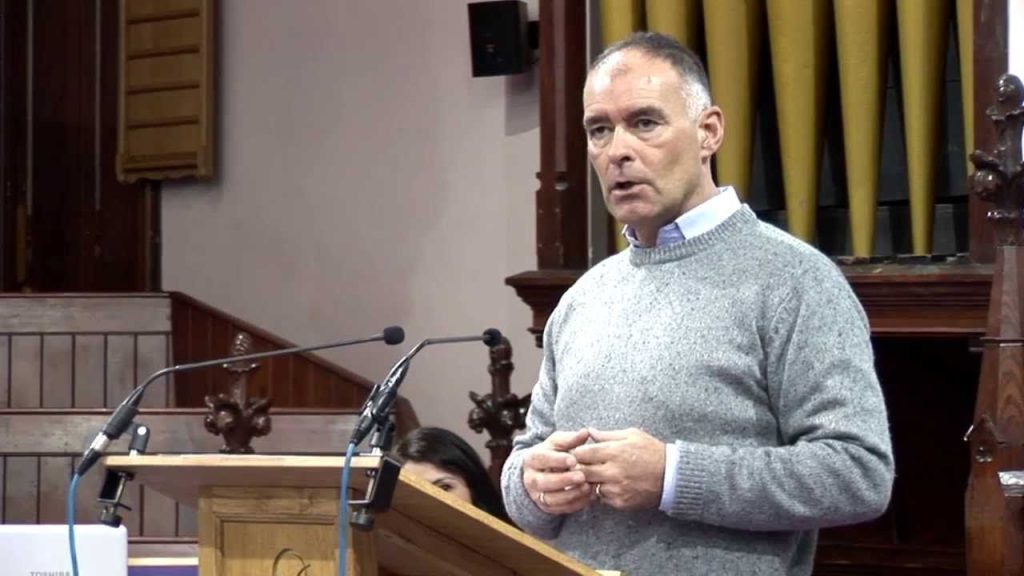
That Kerr’s remit extended beyond construction was all but confirmed in October 2012, when Clancy shockingly testified to the House of Commons Scottish Affairs Committee that his investigators only seized “between five and 10 percent” of documentation stored in The Consulting Association’s offices:
“We didn’t search every item within the office because our warrant specifically said ‘the existence of a blacklist.’ Once we found that, our search…[stopped] because we had found the evidence we were looking for…There were lots of other files within the office…filing cabinets full of stuff…What the other 90 or 95 percent was I can’t comment on…We just took the information relevant to our inquiry…We didn’t go through all the other information. We looked and said, ‘we are satisfied that that is the information, that is the blacklist that operates within the construction industry.’”
An incredulous and dumbfounded panel of parliamentarians duly interrogated the ICO’s Investigations Manager with some intensity. What information did he and his team see but not seize? Why didn’t they inspect more material? How did they know there were not more blacklists? How did they know the other files were not relevant, if they did not inspect the documentation?
To these flagrantly obvious queries Clancy had no real answer. He nonetheless provided intriguing insights into what was taken. As a former police officer, he was confident some of the material had been provided to Kerr by British law enforcement and/or security services. Clancy based his judgment on the language contained in certain reports, and the nature of information held on particular blacklistees.
For instance, one blacklist file was replete with “in-depth analysis of an individual’s home circumstances and what his neighbors thought about him.” Clancy concluded this was drawn from an official “intelligence record.”

“Detailed Reporting”
What the remaining files contained will literally never be known. As Kerr told the same Committee the next month, not long after the ICO raid, he “burned the whole damned lot, everything,” so thoroughly there was “no chance of any of it remaining.” But The Consulting Association chief admitted maintaining files on around 200 environmental activists.
When asked whether he had conducted “security clearances” for job applicants, Kerr asked if he could answer “in private,” and was not pressed further. This role would by definition connect him directly to British security services. Two weeks later, he died from reported heart failure. Nonetheless, before his passing, he admitted that he had attended a meeting between construction firm directors and a National Extremism Tactical Coordination Unit officer in 2008. There, workers of interest to Special Branch—Britain’s political police—were discussed.
Moreover, in March 2018, the Metropolitan Police confirmed its officers had extensively surveilled and infiltrated trade unions. Such was the extent of these activities, Special Branch maintained a dedicated “Industrial Intelligence Section.” This unit collected and provided intelligence which ended up in Kerr’s files. In July that year, the 2016 Creedon Report into Operation Reuben, an internal police investigation into blacklisting, was released to lawyers representing the Blacklist Support Group.
Their members are “core participants” in the ongoing UCPI. A copy reviewed by CovertAction Magazine is heavy on redaction and self-exculpation, but offers many tantalizing indications of clandestine collaboration between the British state and big business, and the role undercover operatives played in ruining the lives of so many innocent people.
For one, it is clear that blacklists operated in a vast number of professional fields. Special Branch’s aforementioned “Industrial Intelligence Unit” is said to have “used various methods to report on the whole range of working life, from teaching to the docks.” This included “collating reports from other units, from uniform officers to SDS, attending conferences and protests personally, and developing well-placed confidential contacts from within the different sectors.”
The SDS was the Special Demonstration Squad, a notorious and now-defunct Special Branch division set up in 1968 specifically to penetrate protest groups in the UK. Its operatives, often using identities stolen from dead children, embedded themselves in political movements for years at a time, frequently deceiving women into sexual relationships along the way. At least one SDS officer—Bob Lambert, who later headed the unit—fathered a child with an activist.
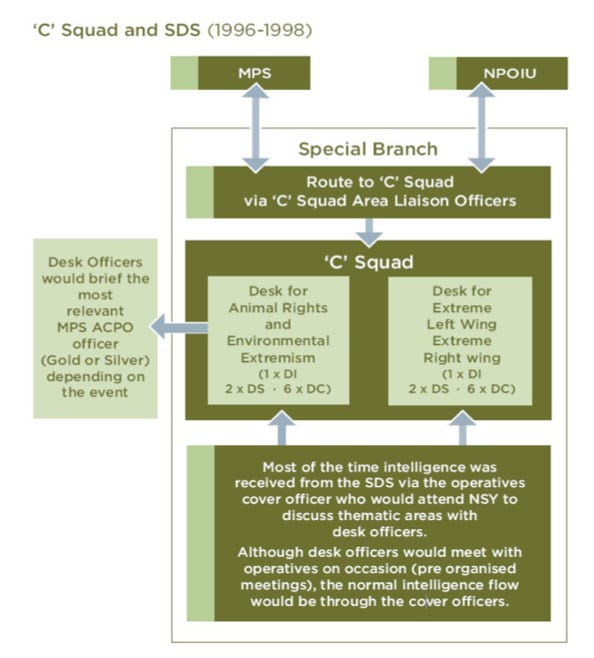
A dedicated section of the Report deals with allegations that SDS officer Mark Jenner, who as “Mark Cassidy” infiltrated left-wing groups—and construction union UCAT—in North London 1995-2000 and provided information to The Consulting Association:
“A review of the reporting linked to DC Jenner shows during his tenure, he reported on over 300 individuals…by cross-referencing the names with the blacklist, [we] found 16 individuals from the blacklist are mentioned Jenner, some of which entailed detailed reporting.”
However, in just one of many examples of contradictory doublespeak littered throughout the report, the author subsequently suggests there is no evidence “any of the intelligence provided by Jenner appeared on the blacklist” or “SDS information was passed to blacklisting organisations directly.” This is despite conceding “it is of course possible some information gathered by the SDS was passed to industry contacts on a personal basis by Special Branch officers from other departments:”
“For example, [name redacted] claims to have had a reciprocal relationship with Special Branches around the country until [year(s) redacted]. However, there is no method for identifying whether this happened.”
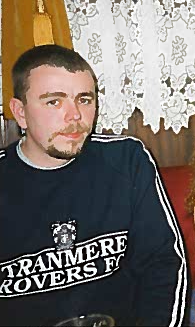
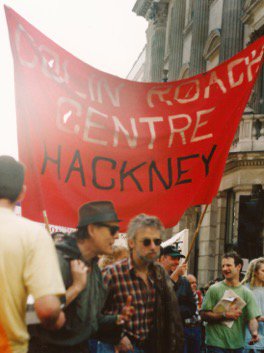
Even if information on just 16 individuals spied on by Jenner ended up in blacklisting files by some means or other, he was one of several SDS officers who collected intelligence on trade unionists, directly or indirectly. Another was Peter Francis who, as “Pete Black,” infiltrated a variety of groups 1993-1997, including the Stephen Lawrence Family Campaign.

Francis turned whistleblower in 2010. He has confirmed that he opened a file on a bricklayer named Frank Smith, who was involved in both union campaigns for better wages and conditions and anti-fascist activism. Smith was eventually blacklisted, his Association file noting his presence at various protests, and that he was “under constant watch [officially] and seen as politically dangerous.” Francis believes he was responsible for this. After all, how else would a construction manager know Smith attended an anti-fascist rally?
Troublingly, too, the Creedon Report makes clear that British authorities continue to share information on workers with big business today, via the “Industrial Liaison Section” of the National Domestic Extremism and Disorder Intelligence Unit (NDEDIU). The Unit’s official purview is to “directly combat domestic extremism in society,” including “acts of terrorism motivated by extremism.” Evidently, the British state categorizes spying on trade unionists as a “counter-terrorism” effort.

CovertAction Magazine is made possible by subscriptions, orders and donations from readers like you.
Blow the Whistle on U.S. Imperialism
Click the whistle and donate
When you donate to CovertAction Magazine, you are supporting investigative journalism. Your contributions go directly to supporting the development, production, editing, and dissemination of the Magazine.
CovertAction Magazine does not receive corporate or government sponsorship. Yet, we hold a steadfast commitment to providing compensation for writers, editorial and technical support. Your support helps facilitate this compensation as well as increase the caliber of this work.
Please make a donation by clicking on the donate logo above and enter the amount and your credit or debit card information.
CovertAction Institute, Inc. (CAI) is a 501(c)(3) non-profit organization and your gift is tax-deductible for federal income purposes. CAI’s tax-exempt ID number is 87-2461683.
We sincerely thank you for your support.
Disclaimer: The contents of this article are the sole responsibility of the author(s). CovertAction Institute, Inc. (CAI), including its Board of Directors (BD), Editorial Board (EB), Advisory Board (AB), staff, volunteers and its projects (including CovertAction Magazine) are not responsible for any inaccurate or incorrect statement in this article. This article also does not necessarily represent the views the BD, the EB, the AB, staff, volunteers, or any members of its projects.
Differing viewpoints: CAM publishes articles with differing viewpoints in an effort to nurture vibrant debate and thoughtful critical analysis. Feel free to comment on the articles in the comment section and/or send your letters to the Editors, which we will publish in the Letters column.
Copyrighted Material: This web site may contain copyrighted material the use of which has not always been specifically authorized by the copyright owner. As a not-for-profit charitable organization incorporated in the State of New York, we are making such material available in an effort to advance the understanding of humanity’s problems and hopefully to help find solutions for those problems. We believe this constitutes a ‘fair use’ of any such copyrighted material as provided for in section 107 of the US Copyright Law. You can read more about ‘fair use’ and US Copyright Law at the Legal Information Institute of Cornell Law School.
Republishing: CovertAction Magazine (CAM) grants permission to cross-post CAM articles on not-for-profit community internet sites as long as the source is acknowledged together with a hyperlink to the original CovertAction Magazine article. Also, kindly let us know at info@CovertActionMagazine.com. For publication of CAM articles in print or other forms including commercial internet sites, contact: info@CovertActionMagazine.com.
By using this site, you agree to these terms above.
About the Author

Kit Klarenberg is an investigative journalist exploring the role of intelligence services in shaping politics and perceptions.
Follow him on Twitter @KitKlarenberg.

